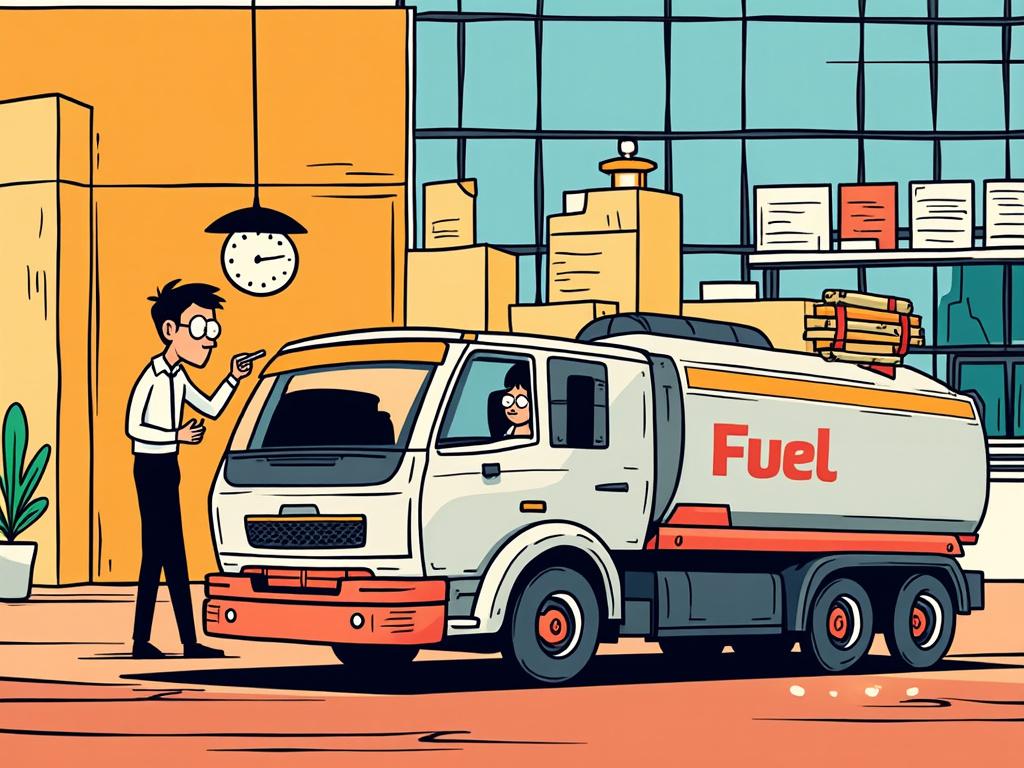
UAE Sustainable Aviation Fuel Policy: Charting the Course for Green Skies
Reading time: 12 minutes
Ever wondered how the UAE plans to transform aviation from one of the world’s most carbon-intensive industries into a beacon of sustainability? You’re about to discover a fascinating journey of innovation, policy, and strategic positioning that’s reshaping the Middle East’s aviation landscape.
Table of Contents
- Understanding Sustainable Aviation Fuel: The Game Changer
- UAE’s Strategic Policy Framework
- Implementation Roadmap and Key Milestones
- Industry Impact and Economic Implications
- Navigating Challenges: Practical Solutions
- Soaring Toward 2050: Your Strategic Navigation Guide
- Frequently Asked Questions
Understanding Sustainable Aviation Fuel: The Game Changer
Picture this: You’re boarding a flight from Dubai to London, but this time, your aircraft is powered by fuel derived from cooking oil, agricultural waste, or even captured carbon dioxide. Welcome to the world of Sustainable Aviation Fuel (SAF) – the aviation industry’s most promising pathway to decarbonization.
SAF represents a drop-in replacement for conventional jet fuel, capable of reducing lifecycle carbon emissions by up to 80% compared to traditional fossil fuels. Unlike electric or hydrogen alternatives that require entirely new aircraft designs, SAF works seamlessly with existing aircraft and infrastructure – making it the pragmatic choice for immediate impact.
The Science Behind the Solution
Here’s the straight talk: SAF isn’t just one type of fuel – it’s an umbrella term covering multiple production pathways. The most common include:
- HEFA (Hydroprocessed Esters and Fatty Acids): Derived from waste oils and fats
- Power-to-Liquid: Created using renewable electricity and captured CO2
- Biomass-to-Liquid: Produced from agricultural and forestry residues
- Alcohol-to-Jet: Converted from sustainable ethanol sources
The UAE’s approach strategically leverages its unique geographical and economic advantages – abundant solar energy for power-to-liquid processes and strategic positioning as a global aviation hub.
Market Reality Check
Currently, SAF represents less than 0.1% of global jet fuel consumption. However, the International Air Transport Association (IATA) projects this needs to reach 65% by 2050 to achieve net-zero emissions. That’s where the UAE’s ambitious policy framework becomes crucial.
UAE’s Strategic Policy Framework
The UAE didn’t just stumble into sustainable aviation – they architected a comprehensive strategy that positions the nation as the Middle East’s SAF leader. Let’s break down the essential components:
The UAE SAF Programme: Core Pillars
Launched in 2023, the UAE’s SAF programme operates on four strategic pillars:
1. Production Incentives: The government offers substantial financial incentives for SAF production facilities, including tax breaks, land grants, and expedited licensing processes. Abu Dhabi National Oil Company (ADNOC) has committed to producing 1 billion liters of SAF annually by 2030.
2. Regulatory Harmonization: The UAE adopted international SAF standards while creating streamlined approval processes. This means faster market entry for producers and reduced regulatory uncertainty.
3. Infrastructure Development: Strategic investments in blending facilities, storage infrastructure, and distribution networks across major airports, particularly Dubai International and Abu Dhabi International.
4. Demand Stimulation: Mandatory blending requirements starting at 1% by 2025, scaling to 10% by 2030, creating guaranteed market demand.
Policy Integration with National Strategy
Smart policy design isn’t just about aviation – it’s about ecosystem thinking. The UAE’s SAF policy seamlessly integrates with broader national strategies:
- UAE Net Zero 2050: Aviation decarbonization contributes 15% to national emission reduction targets
- National Hydrogen Strategy: Green hydrogen production supports power-to-liquid SAF pathways
- Circular Economy Strategy: Waste-to-fuel initiatives align with national waste reduction goals
Quick Scenario: Imagine you’re an airline operating through Dubai. What does this policy framework mean for your operations? Lower long-term fuel costs, enhanced sustainability credentials, and access to growing passenger segments prioritizing environmental responsibility.
Implementation Roadmap and Key Milestones
Successful policy implementation isn’t about grand announcements – it’s about strategic milestones and measurable progress. Here’s how the UAE is turning policy into practice:
Phase 1: Foundation Building (2023-2025)
Infrastructure Development: Construction of the first commercial SAF production facility in Ruwais, with capacity for 200,000 tons annually. This facility, a joint venture between ADNOC and international partners, represents a $2 billion investment.
Regulatory Framework: Establishment of the UAE SAF Certification Authority, streamlining approval processes from 18 months to 6 months for certified producers.
Pilot Programs: Emirates and Etihad Airways launched SAF demonstration flights, accumulating operational data and building supply chain relationships.
Phase 2: Scale-Up (2025-2030)
This is where the rubber meets the runway. The UAE plans to establish multiple production facilities, targeting 5% SAF blending across all domestic flights by 2028.
| Metric | 2025 Target | 2030 Target | Current Status |
|---|---|---|---|
| SAF Production Capacity (Million Liters) | 400 | 1,000 | 150 |
| Mandatory Blending Percentage | 1% | 10% | 0.5% |
| Certified Production Facilities | 3 | 8 | 1 |
| Annual CO2 Reduction (Million Tons) | 1.2 | 4.8 | 0.3 |
| Investment Committed (USD Billion) | 5 | 15 | 3.2 |
International Partnerships: The Multiplier Effect
The UAE recognizes that SAF success requires global collaboration. Strategic partnerships with Finland’s Neste, the world’s largest SAF producer, and joint research initiatives with MIT and Cambridge University accelerate technology transfer and knowledge sharing.
Industry Impact and Economic Implications
Let’s talk numbers that matter. The UAE’s SAF policy isn’t just environmental theater – it’s creating tangible economic value and industry transformation.
Case Study: Emirates Airlines’ SAF Integration
Emirates, the UAE’s flagship carrier, provides a compelling case study in SAF adoption. In 2023, the airline committed to purchasing 500 million gallons of SAF over 10 years, representing a $3 billion investment. Here’s what this means:
Operational Benefits:
- 15% reduction in lifecycle emissions per flight
- Enhanced fuel security through diversified supply sources
- Compliance with international environmental regulations
- Premium positioning in the growing sustainable travel market
Economic Impact: Emirates estimates that SAF adoption will create 2,000 direct jobs in the UAE and generate $800 million in annual economic activity by 2030.
The Competitive Advantage Equation
UAE SAF Market Position Comparison
Comparison based on regional benchmarking against Middle East aviation markets
Broader Economic Ecosystem
The ripple effects extend far beyond aviation. The UAE’s SAF policy is catalyzing development in:
- Renewable Energy: Expanded solar capacity to power SAF production facilities
- Waste Management: Enhanced collection and processing of organic waste streams
- Technology Innovation: Research and development in next-generation fuel production methods
- Export Opportunities: Positioning the UAE as a regional SAF supplier
Navigating Challenges: Practical Solutions
Real talk: The path to sustainable aviation isn’t without turbulence. Let’s examine the key challenges and how the UAE is addressing them strategically.
Challenge 1: Cost Premium Reality
The Problem: SAF currently costs 2-3 times more than conventional jet fuel, creating economic barriers for widespread adoption.
UAE’s Strategic Response:
- Production Subsidies: Government covers 40% of initial production costs for certified facilities
- Volume Guarantees: Long-term offtake agreements providing price certainty for producers
- Carbon Pricing: Introduction of carbon credits for SAF users, reducing effective fuel costs
- Scale Economics: Targeting production volumes that drive down unit costs through economies of scale
Pro Tip: Airlines considering SAF adoption should start with routes where passengers demonstrate willingness to pay sustainability premiums – typically business routes and leisure destinations with environmentally conscious travelers.
Challenge 2: Feedstock Availability and Sustainability
The Problem: Ensuring sufficient, sustainable feedstock supplies without competing with food production or causing environmental harm.
Strategic Solutions:
- Diversified Feedstock Strategy: Combining waste oils, agricultural residues, and power-to-liquid pathways
- Sustainability Certification: Mandatory sustainability criteria for all feedstock sources
- Regional Partnerships: Agreements with neighboring countries for feedstock supply chains
- Innovation Investment: $500 million research fund for advanced feedstock technologies
Challenge 3: Infrastructure Integration
The Problem: Seamlessly integrating SAF into existing fuel supply chains without operational disruption.
Practical Implementation:
- Phased Rollout: Starting with dedicated SAF handling at major hubs
- Blending Facilities: Strategic placement near airports to minimize transportation costs
- Quality Assurance: Comprehensive testing protocols ensuring fuel quality consistency
- Training Programs: Educating ground crews and airline personnel on SAF handling procedures
Soaring Toward 2050: Your Strategic Navigation Guide
The UAE’s sustainable aviation fuel journey represents more than policy implementation – it’s about positioning the nation as a global leader in aviation sustainability while creating lasting economic value. Here’s your roadmap for understanding and leveraging these developments:
Immediate Action Items (Next 12 Months)
For Airlines and Aviation Companies:
- Assess SAF integration opportunities within your current operations
- Establish relationships with UAE-based SAF producers and suppliers
- Develop sustainability communication strategies highlighting SAF adoption
- Explore financing options for SAF premium costs, including carbon credit mechanisms
For Investors and Business Leaders:
- Evaluate investment opportunities in UAE’s expanding SAF ecosystem
- Monitor regulatory developments and their impact on market dynamics
- Consider strategic partnerships with established players in the SAF value chain
Medium-Term Strategic Positioning (2025-2030)
The UAE’s ambitious 10% blending mandate by 2030 creates substantial market opportunities. Companies positioning themselves now will benefit from first-mover advantages as the market scales. Key focus areas include technology innovation, supply chain optimization, and international expansion.
Long-Term Vision Alignment (2030-2050)
By 2050, the UAE envisions becoming a net exporter of sustainable aviation fuel, leveraging its renewable energy advantages and strategic location. This transformation will fundamentally reshape the Middle East’s aviation ecosystem and create new economic opportunities across multiple sectors.
Frequently Asked Questions
How does UAE’s SAF policy compare to international standards?
The UAE’s SAF policy aligns with and often exceeds international standards set by ICAO and IATA. The mandatory 10% blending requirement by 2030 is more aggressive than many developed nations, while the comprehensive production incentive framework provides stronger government support than most markets. The UAE also implements stringent sustainability criteria that match or exceed EU renewable energy directive standards.
What are the realistic cost projections for SAF adoption in the UAE?
Current SAF costs in the UAE range from $800-1,200 per ton compared to $400-600 for conventional jet fuel. However, government subsidies reduce effective costs by 30-40% for qualifying users. Industry projections suggest cost parity with conventional fuel by 2035, driven by production scale increases, technology improvements, and potential carbon pricing mechanisms that increase conventional fuel costs.
How will SAF policy affect flight costs and passenger experience?
Initial SAF adoption may result in modest fare increases of 1-3% on routes with high SAF blending ratios. However, airlines are increasingly absorbing these costs to maintain competitiveness while leveraging SAF adoption for marketing advantages. Passengers won’t notice operational differences since SAF performs identically to conventional fuel, but they’ll benefit from reduced environmental impact and airlines’ enhanced sustainability credentials.
The UAE’s sustainable aviation fuel policy represents a masterclass in strategic environmental policy – balancing ambitious climate goals with economic pragmatism. As the aviation industry grapples with decarbonization pressures, the UAE is positioning itself not just as a participant, but as a leader shaping the future of sustainable flight.
The question isn’t whether sustainable aviation fuel will transform the industry – it’s whether you’ll be ready to capitalize on the opportunities this transformation creates. How will you position yourself in this evolving landscape?

Article reviewed by Mira Ivanova, Startup Ecosystem Investor | Balkan Tech Innovations, on June 4, 2025
